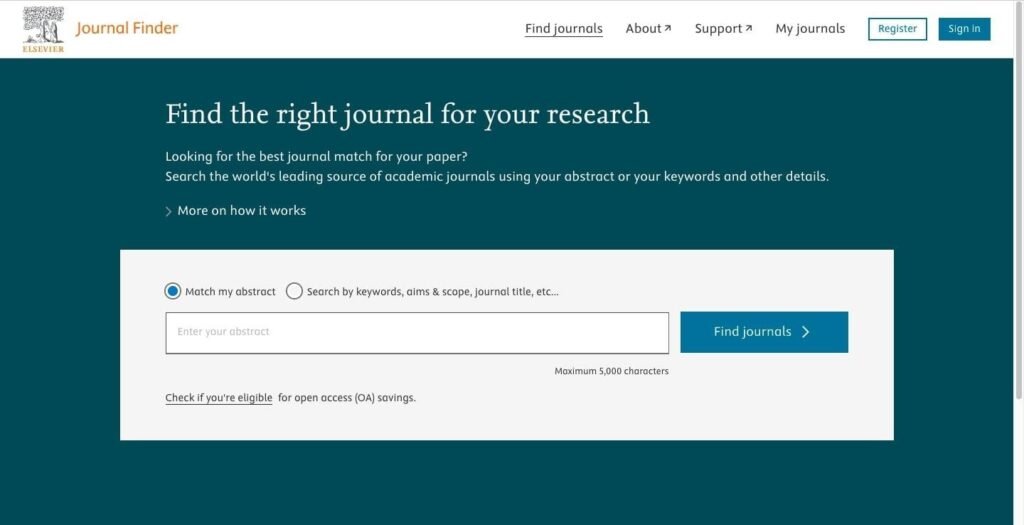Publishing a research paper is like getting your golden ticket into the academic Wonka factory. But navigating the submission process can feel like wading through a jungle without a map. Don’t worry, though!
Table Of Content
- Choose the Right Journal
- Understand the Submission Guidelines
- Prepare Your Manuscript
- Submit Your Manuscript
- Peer Review Process
- Respond to Reviewer Comments
- Acceptance and Publication
- Final Thoughts
- FAQ
- Q1: What are the key steps to publish a research paper in an Elsevier journal?
- Q2: How do I choose the right Elsevier journal for my research paper?
- Q3: What should I include in my cover letter when submitting to an Elsevier journal?
- Q4: How long does the peer review process take for Elsevier journals?
- Q5: What are common reasons for rejection of research papers by Elsevier journals?
Whether you’re a seasoned researcher or a grad student dipping your toes into the publishing waters for the first time, this guide will help you sail smoothly through the process.
To publish a research paper in Elsevier journals, first select the appropriate journal using their Journal Finder tool. Carefully follow the journal’s submission guidelines and format your manuscript accordingly. Submit your polished manuscript through the Editorial Manager system, and respond thoughtfully to any reviewer feedback. Once accepted, your paper will be published online and in print.
Let’s dive into the nitty-gritty of getting your research published in an Elsevier journal.
Choose the Right Journal
The first step in your publishing journey is selecting the right journal.
Elsevier publishes over 2,500 journals across various fields, so there’s no shortage of options. Start by asking yourself these questions:
- What is the scope of your research?
- Who is your target audience?
- What journals do you frequently cite in your work?
Use Elsevier’s Journal Finder tool to narrow down your options based on your manuscript’s title, abstract, and field of study.

Understand the Submission Guidelines
Each journal has specific submission guidelines. These cover everything from manuscript formatting to ethical considerations.
Spend some time reading these guidelines on the journal’s website. Here’s a checklist to get you started:
- Manuscript structure (abstract, keywords, introduction, methods, results, discussion, references)
- Formatting style (font size, margins, citation style)
- Word count limits
- Ethical compliance (e.g., conflicts of interest, informed consent)
Prepare Your Manuscript
Before hitting the ‘submit’ button, make sure your manuscript is polished and ready for review. Here are some key points to consider:
- Title and Abstract: Your title should be concise yet descriptive. The abstract should summarize your research question, methodology, findings, and conclusions.
- Introduction: Clearly state the research problem, review relevant literature, and outline your study’s objectives.
- Methodology: Provide detailed information on your research design, data collection, and analysis methods.
- Results: Present your findings in a clear and logical manner, using tables and figures where appropriate.
- Discussion: Interpret your results, discuss their implications, and suggest areas for future research.
- References: Ensure all sources are cited correctly according to the journal’s guidelines.
Submit Your Manuscript
With your manuscript ready, it’s time to submit. Most Elsevier journals use the Editorial Manager system for submissions. Here’s a step-by-step overview:
- Create an Account: If you’re a first-time user, you’ll need to register.
- Start New Submission: Enter your manuscript’s title, abstract, and keywords.
- Upload Files: Attach your manuscript, figures, tables, and any supplementary materials.
- Suggest Reviewers: Some journals allow or require you to suggest potential reviewers for your paper.
- Cover Letter: Write a compelling cover letter explaining the significance of your research and why it fits the journal’s scope.
Peer Review Process
Once submitted, your manuscript undergoes a peer review process.
This can be nerve-wracking, but it’s a crucial step in ensuring the quality and integrity of published research. Here’s what to expect:
- Initial Check: The journal editor will first review your submission to ensure it meets the basic requirements.
- Reviewer Selection: Your manuscript is then sent to 2-3 experts in your field.
- Review Feedback: Reviewers will evaluate your manuscript and provide feedback. This can include requests for revisions, suggestions for improvement, or, in some cases, outright rejection.
Respond to Reviewer Comments
Reviewer feedback can be tough, but it’s meant to improve your work.
Address each comment thoughtfully and make the necessary revisions. Then, resubmit your revised manuscript along with a detailed response to the reviewers’ comments.
Acceptance and Publication
If your revisions satisfy the reviewers, your manuscript will be accepted for publication. Hooray! But wait, there’s more:
- Proofs: You’ll receive a proof of your article to check for any final errors.
- Publication: Once finalized, your article will be published online, and eventually, in a print issue of the journal.
- Promotion: Share your published work with your network, on social media, and in relevant academic forums to increase its visibility.
Final Thoughts
Publishing in an Elsevier journal is a significant achievement and a testament to your hard work and dedication.
The process can be daunting, but by following these steps and staying persistent, you can navigate the journey successfully.
Remember, every researcher faces challenges along the way – what matters is how you overcome them. Happy publishing!
FAQ
Q1: What are the key steps to publish a research paper in an Elsevier journal?
To publish in an Elsevier journal, select the right journal, adhere to submission guidelines, prepare a polished manuscript, submit through Editorial Manager, and respond to reviewer feedback. Once accepted, your paper will be published online and in print.
Q2: How do I choose the right Elsevier journal for my research paper?
Use Elsevier’s Journal Finder tool to match your manuscript’s title, abstract, and field of study with the most suitable journals. Consider the journal’s scope, audience, and the types of articles they typically publish.
Q3: What should I include in my cover letter when submitting to an Elsevier journal?
Your cover letter should briefly explain the significance of your research, why it fits the journal’s scope, and highlight any novel findings. It’s also a good place to suggest potential reviewers if allowed.
Q4: How long does the peer review process take for Elsevier journals?
The peer review process can vary but typically takes a few weeks to several months. The exact duration depends on the journal, the availability of reviewers, and the complexity of your research.
Q5: What are common reasons for rejection of research papers by Elsevier journals?
Common reasons include lack of novelty, poor manuscript structure, failure to meet the journal’s scope, ethical issues, and insufficient data or methodology. Addressing these aspects thoroughly can increase your chances of acceptance.








No Comment! Be the first one.